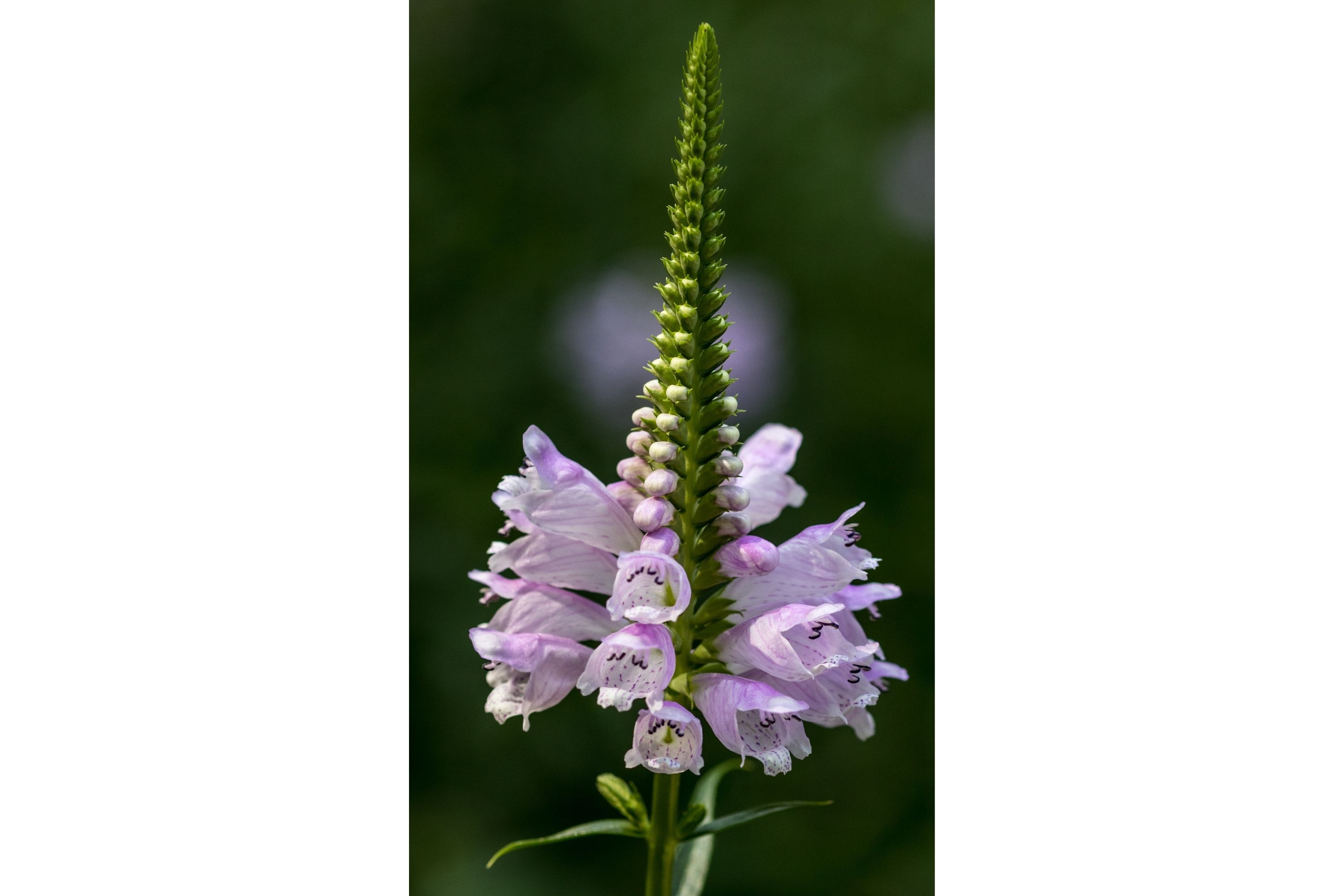Obedient plant
(Physostegia virginiana)

Description
Physostegia virginiana, commonly known as obedient plant, is a beautiful flowering perennial native to North America. It belongs to the mint family, Lamiaceae, and is widely appreciated for its showy blooms, attractive foliage, and adaptability to a wide range of growing conditions. In this article, we will explore the various aspects of this fascinating plant, including its history, morphology, growing requirements, propagation, and usage. History and Etymology The genus Physostegia is derived from the Greek words "physis" and "stegos," meaning "bladder" and "covering," respectively, referring to the inflated calyx that covers the flower. The species name virginiana refers to its native range in Virginia, USA, where it was first discovered and described by the botanist Johann David Schoepf in 1789. Morphology Physostegia virginiana is a clump-forming herbaceous perennial that grows to a height of 2-4 feet and a spread of 1-2 feet. It has square stems that are hairy and branching, bearing lanceolate to ovate leaves that are 2-6 inches long and 1-2 inches wide. The leaves are dark green and toothed along the margins, and have a slightly rough texture. The flowers of Physostegia virginiana are arranged in dense spikes that emerge from the leaf axils in mid to late summer. The individual flowers are tubular, about 1 inch long, and come in shades of pink, white, or purple. They are arranged in whorls around the stem, with the lower flowers opening first and the upper ones following in succession. The calyx of each flower is inflated and divided into two lips, the upper one being shorter and more curved than the lower one. Growing Requirements Physostegia virginiana is a versatile plant that can thrive in a variety of growing conditions. It prefers full sun to partial shade and well-drained soil that is rich in organic matter. However, it can tolerate a wide range of soil types, including clay, sandy, and loamy soils, as well as acidic to alkaline pH levels. This plant is moderately drought-tolerant once established, but it prefers consistent moisture and should be watered regularly during periods of drought. It is also relatively pest-resistant, but may be susceptible to powdery mildew and spider mites in humid conditions. Propagation Physostegia virginiana can be propagated by division, stem cuttings, or seed. Division is the easiest and most reliable method, and should be done in spring or fall when the plant is not actively growing. Simply dig up the clump and carefully separate the individual crowns, making sure each division has at least one healthy stem and a good root system. Replant the divisions immediately, and water them well. Stem cuttings can be taken in early summer when the plant is actively growing. Select a stem that is about 4-6 inches long and remove the lower leaves. Dip the cut end in rooting hormone, and plant it in a pot filled with a well-draining potting mix. Keep the cutting in a warm and humid environment, and water it regularly until roots develop. Seed propagation is possible, but may not produce plants that are true to the parent. Collect the seeds in the fall and store them in a cool and dry place until spring. Sow the seeds in a seed-starting mix and keep them moist until germination, which can take up to 4 weeks. Usage Physostegia virginiana is a popular ornamental plant that is valued for its showy flowers and attractive foliage. It is commonly used in borders, cottage gardens, meadows, and naturalized areas.
Taxonomic tree:







